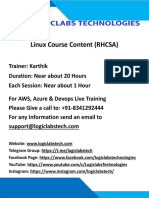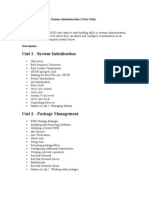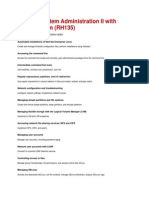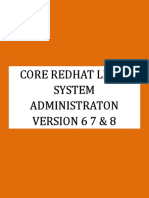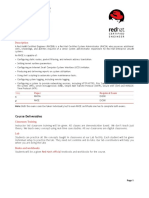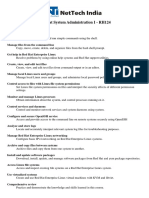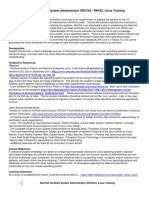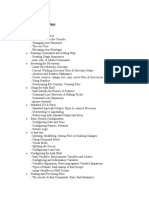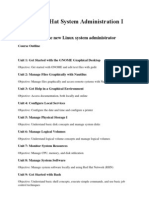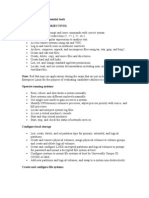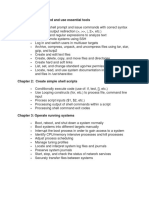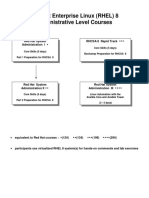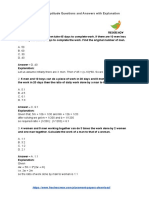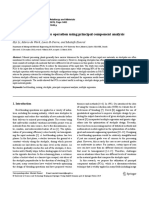0% found this document useful (0 votes)
43 views3 pagesKarthik Linux Course Content
The document outlines the content covered in a 4 week Linux Admin Course (RHCSA) including topics like Linux commands, installation, user management, tools, file systems, networking, security and more.
Uploaded by
MehboobCopyright
© © All Rights Reserved
We take content rights seriously. If you suspect this is your content, claim it here.
Available Formats
Download as PDF, TXT or read online on Scribd
0% found this document useful (0 votes)
43 views3 pagesKarthik Linux Course Content
The document outlines the content covered in a 4 week Linux Admin Course (RHCSA) including topics like Linux commands, installation, user management, tools, file systems, networking, security and more.
Uploaded by
MehboobCopyright
© © All Rights Reserved
We take content rights seriously. If you suspect this is your content, claim it here.
Available Formats
Download as PDF, TXT or read online on Scribd
/ 3
